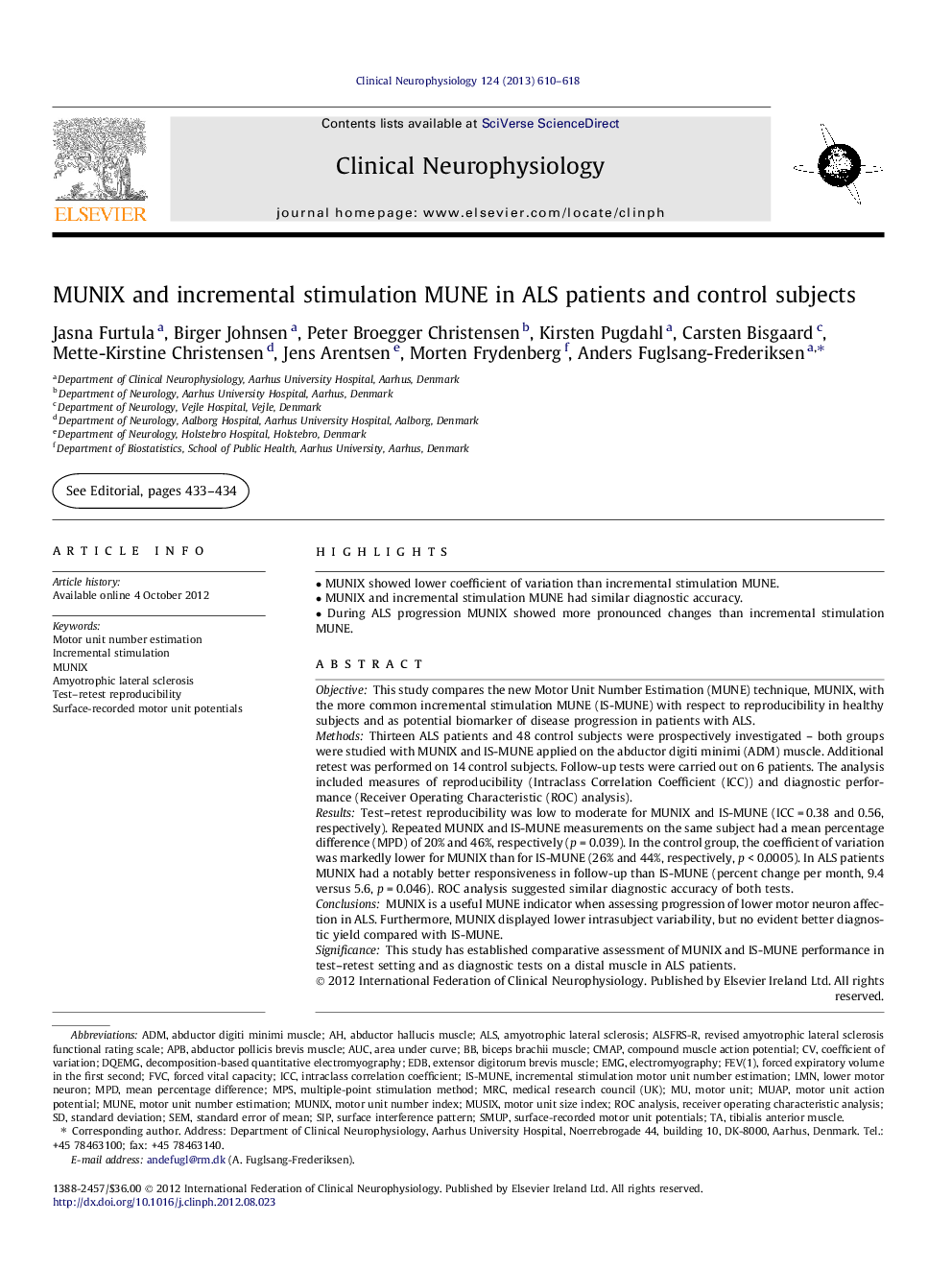| Article ID | Journal | Published Year | Pages | File Type |
|---|---|---|---|---|
| 3044376 | Clinical Neurophysiology | 2013 | 9 Pages |
ObjectiveThis study compares the new Motor Unit Number Estimation (MUNE) technique, MUNIX, with the more common incremental stimulation MUNE (IS-MUNE) with respect to reproducibility in healthy subjects and as potential biomarker of disease progression in patients with ALS.MethodsThirteen ALS patients and 48 control subjects were prospectively investigated – both groups were studied with MUNIX and IS-MUNE applied on the abductor digiti minimi (ADM) muscle. Additional retest was performed on 14 control subjects. Follow-up tests were carried out on 6 patients. The analysis included measures of reproducibility (Intraclass Correlation Coefficient (ICC)) and diagnostic performance (Receiver Operating Characteristic (ROC) analysis).ResultsTest–retest reproducibility was low to moderate for MUNIX and IS-MUNE (ICC = 0.38 and 0.56, respectively). Repeated MUNIX and IS-MUNE measurements on the same subject had a mean percentage difference (MPD) of 20% and 46%, respectively (p = 0.039). In the control group, the coefficient of variation was markedly lower for MUNIX than for IS-MUNE (26% and 44%, respectively, p < 0.0005). In ALS patients MUNIX had a notably better responsiveness in follow-up than IS-MUNE (percent change per month, 9.4 versus 5.6, p = 0.046). ROC analysis suggested similar diagnostic accuracy of both tests.ConclusionsMUNIX is a useful MUNE indicator when assessing progression of lower motor neuron affection in ALS. Furthermore, MUNIX displayed lower intrasubject variability, but no evident better diagnostic yield compared with IS-MUNE.SignificanceThis study has established comparative assessment of MUNIX and IS-MUNE performance in test–retest setting and as diagnostic tests on a distal muscle in ALS patients.
► MUNIX showed lower coefficient of variation than incremental stimulation MUNE. ► MUNIX and incremental stimulation MUNE had similar diagnostic accuracy. ► During ALS progression MUNIX showed more pronounced changes than incremental stimulation MUNE.
